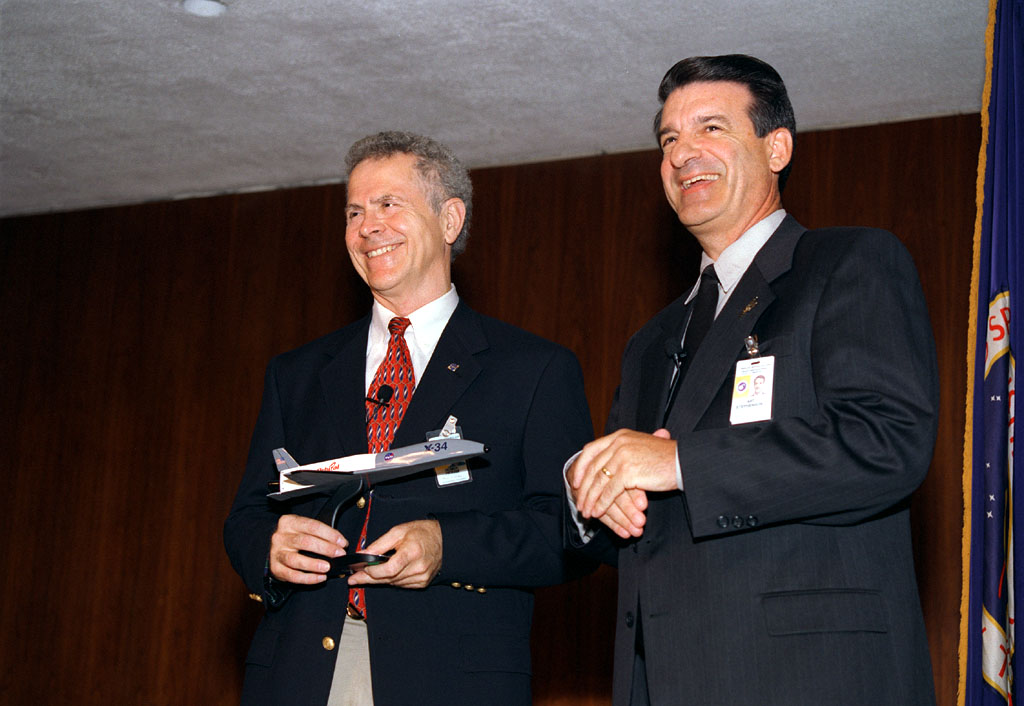
Arthur G. Stephenson
Former Center Director at Marshall Space Flight Center (1998–2003)
Arthur G. Stephenson was director of NASA’s Marshall Space Flight Center in Huntsville, Ala. He headed one of NASA’s largest field installations, with more than 6,500 civil service and contract employees and an annual budget of $2.3 billion. Stephenson managed a broad range of research and development activities for the U.S. space program at the Marshall Center.
Born in New London, Conn., Stephenson graduated from Narbonne High School in Harbor City, Calif. He earned a bachelor’s degree in electrical engineering from the University of Redlands, Calif., and completed the executive program in management at the John E. Anderson Graduate School of Management at the University of California at Los Angeles.
After joining Marshall in 1998, Stephenson had overseen the Center’s work on critical NASA initiatives such as development of new reusable launch vehicles, Space Shuttle propulsion, advanced space transportation systems, research in microgravity, and science payload operations aboard the International Space Station, as well as the launch and continuing successful operation of the Chandra X-ray Observatory—the world’s most powerful X-ray telescope.
He also initiated the 2nd and 3rd generation propulsion technology development programs at NASA and supported the establishment of a viable in-space propulsion technology development program. Under his guidance, the National Space Science Technology Center—a partnership with universities and federal agencies to conduct cutting-edge research—was established and ground was broken for the Propulsion Research Laboratory—a world-class laboratory for research into future space transportation technology. He led the Center in numerous successful Space Shuttle launches in which Marshall is responsible for all propulsion elements.
Under Stephenson’s direction, the Marshall Center completed testing of the Truss and Pressurized Modules for the International Space Station. In addition, the Marshall Center provides support to the construction and operation of the International Space Station, including Marshall’s Payload Operations Center that controls all the science experiments aboard the Space Station.
Stephenson arrived at NASA with more than 35 years of experience in the space industry. His career started with TRW in 1964, working on the design of test equipment for the Lunar Module Abort Guidance System in the Apollo program. Over the next 27 years, he took on even greater roles in the nation’s space program. He led the development of the Pioneer Jupiter Spacecraft Receiver, the first spacecraft to exit our solar system, as well as the development of the Space Shuttle Orbiter S-band Network Transponder that is still in use today. He managed several spacecraft programs and space transportation programs before leaving TRW in 1992 to become vice president of Oceaneering Space Systems in Houston. He led the expansion of the Space Systems organization from 30 to 220 people, and oversaw the design and manufacture of hardware that included thermal protection subsystems for several launch vehicles, advanced life support systems, extravehicular activity astronaut equipment, advanced robotics and robotic test beds and space refrigerators. In 1997, he became president of Oceaneering Technologies, which includes divisions working with the U.S. Navy, NASA, Department of Energy and the entertainment industries.
For his exceptional contributions to the space program and the nation, he was recognized with the NASA Outstanding Leadership Medal, the NASA Group Achievement Award, and the NASA Exceptional Achievement Medal. In 2001, he was awarded an honorary doctorate by The University of Alabama System and was selected by the American Society for Engineering Management as the 2001 Engineering Manager of the Year. In 2002, he received the Career Achievement Award from the University of Redlands, California. Most recently, he was selected as the 2003 Martin Luther King Jr. Unity Award recipient by the Huntsville, Alabama, chapter of Alpha Phi Alpha Fraternity Inc. He also received the 2003 Community Service Award from Oakwood College in Huntsville, Alabama.
Stephenson retired as Marshall’s Center Director in May 2003.


























